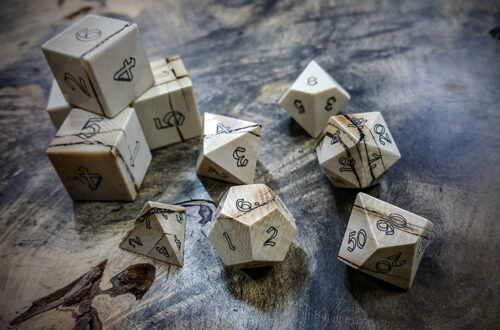
The Perfect Square – Creating a Scaleable Map
It’s been a while since I did a D&D post about building and creating worlds, so, I think I’m just gonna rant for a short time on a small problem I found, involving map scales, and how I think I solved it.
Mapmaking is one of the parts I enjoy the most about D&D. It is an enjoyable exercise of pure creation, especially when it’s your first look at land, continent, or town. There is great fun in building the details, both large and small, and filling in the holes of the knowledge of the area you’re focusing on.
There is a strange happening, though, that comes with zooming in and out of a map in order to focus with greater detail or to broaden out beyond the current scope of the map into something more expansive. Because the graph paper is rectangular, and the squares on the map are, well, squares, the map doesn’t zoom in and out quite correctly. This became irritating lately as I explored the thought of castles and downs within a medieval world, and trying to figure out how many I would have in my large, world squares.
I’d thought about, and then looked up, how close towns would be in the medieval era. to most estimations (in a very broad and basic sense) Population clusters – I don’t want to call them towns because many, many of them weren’t) were about a day away from each other. If you get to a large population center, they get closer to each other, and as you fan out into the wilderness the distance gets greater. Castles are a part of many manors and towns, and though they don’t represent every town, its a pretty significant set.
A day’s travel is roughly 24 miles. A square on my continental map is, as it happens to be, 75 miles square. That means that each square of the map will have about 9 towns on it. on a map about 44 squares by 33 squares (give or take), if I was to fill the map with terrain, very few large lakes or seas, I would end up with a land that has, just about, 13,000 towns on it.
Which got me to start thinking, what if I focused on any one square. What if I had a map that was just those 9 towns on it, and detailed the area around them. This is where I came into problems.
Each of the squares of the map is 75 miles by 75 miles, but a new page of graph paper is not square. in a typical 1/4″ ruled page, there are 44 squares by 33 squares. using the whole page, sadly, becomes impossible if you are zooming into a map in any proper manner. But, It does seem that if I create a usable space of 30×30, that I can zoom in well enough. From the 75×75 scale map, I can then take that square and, using the 30×30 map of the next page, create a map that is at a scale of 2.5 miles by 2.5 miles. It’ll have a town in each 10×10 area of the map, though likely not in the dead center, and is large enough scale to likely be the single focus of a whole adventure or even the majority of a campaign.
Zooming in one more level, we encounter the only loss of fidelity in the whole process. Here, if we take the 2.5-mile square and cut it down into its own 30×30 square, we end up with 440ft per square, which is a strange number. it doesn’t really zoom in cleanly, dividing by 30 into 14.6 ish. It is a handy scale for focusing on large, but not expansive, portions of the map that have maybe a single unique feature or are just full of wilderness. It allows a nice mix of deep focus and broad view, but its inability to divide nicely is a problem. 450, though, divides nicely into a map that is 15′ a square when you zoom in, and that makes it very enticing scale, as that one easily is crafted into combat maps (5×5) and standard adventure maps (10×10).
What I like about this sliding scale of maps is that it feels like it hits all the right focal points that you’d wish to use in a standard mapping endeavor. You’ve got continent-scale (75×75), local scale (2.5×2.5), town scale (450×450) and direct scale (15×15). I’ve not tested it out in real-mapped scenarios, but my current Continent is scaled at 75×75, making it an easy zoom. The scale also grants you a neat and interesting look at the population density of the map, and where you’d want to both place it and how it would be spaced out. I enjoy little glimmers and factoids like that, and trying to figure out how many different castles I have on the continent got clearer – if 10% of any population center has a castle or fort, then every square on the continental map should have a castle on it somewhere. if I use 80% of the usable space on a given sheet of graph paper, that means that my island has some 1050 Castles – of all sorts and shapes and sizes – on it, and that is something that I can really get behind. I love designing and figuring out those types of structures, so getting to feel like I can create a nearly infinite number without being completely wrong is really liberating.
While D&D Doesn’t always need to reflect reality, I do like that I can take reality and use it as a jumping off point for a fantasy realm. My castles are going to be fantastic castles, inhabited by dwarves, elves, and dragon-people, but it will be a realistic number of castles for the age and time, and they will be properly placed within the world and affecting their inhabitants in ways that make sense. These little things making the whole feel that much more cohesive is one of my favorite parts of world building.
Until next time,
-Jonathon

